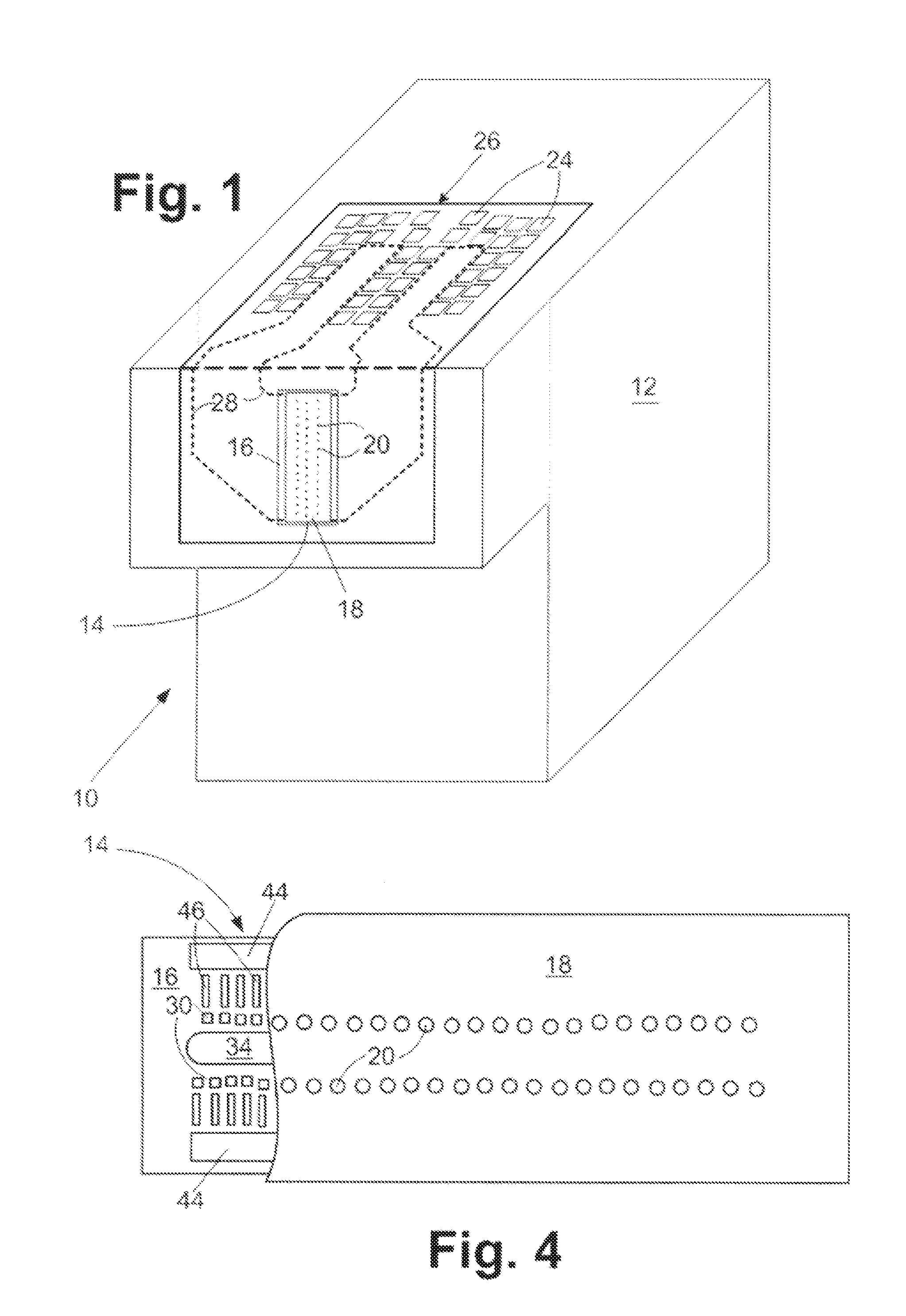High Resistance Heater Material for A Micro-Fluid Ejection Head
a heater material and high-resistance technology, applied in metal-working equipment, printing, writing implements, etc., can solve the problems of increasing the number of process steps and the complexity of a micro-fluid ejection head, and continuing to evolve and become more complex. , to achieve the effect of reducing the substrate area, increasing the resistance, and reducing the energy requiremen
- Summary
- Abstract
- Description
- Claims
- Application Information
AI Technical Summary
Benefits of technology
Problems solved by technology
Method used
Image
Examples
Embodiment Construction
[0019]With reference to FIG. 1, a fluid cartridge 10 for a micro-fluid ejection device is illustrated. The cartridge 10 includes a cartridge body 12 for supplying a fluid to a micro-fluid ejection head 14. The fluid may be contained in a storage area in the cartridge body 12 or may be supplied from a remote source to the cartridge body.
[0020]The micro-fluid ejection head 14 includes a substrate 16 and a nozzle plate 18 containing nozzles 20. In some embodiments, the cartridge can be removably attached to a micro-fluid ejection device such as an ink jet printer 22 (FIG. 2). Accordingly, electrical contacts 24 are provided on a flexible circuit 26 for electrically connecting the cartridge 10 to the micro-fluid ejection device 22. The flexible circuit 26 includes electrical traces 28 that are connected to the substrate 16 of the micro-fluid ejection head 14.
[0021]An enlarged cross-sectional view, not to scale, of a portion of the micro-fluid ejection head 14 is illustrated in FIG. 3. T...
PUM
| Property | Measurement | Unit |
|---|---|---|
| Temperature | aaaaa | aaaaa |
| Temperature | aaaaa | aaaaa |
| Fraction | aaaaa | aaaaa |
Abstract
Description
Claims
Application Information
 Login to View More
Login to View More - R&D
- Intellectual Property
- Life Sciences
- Materials
- Tech Scout
- Unparalleled Data Quality
- Higher Quality Content
- 60% Fewer Hallucinations
Browse by: Latest US Patents, China's latest patents, Technical Efficacy Thesaurus, Application Domain, Technology Topic, Popular Technical Reports.
© 2025 PatSnap. All rights reserved.Legal|Privacy policy|Modern Slavery Act Transparency Statement|Sitemap|About US| Contact US: help@patsnap.com



